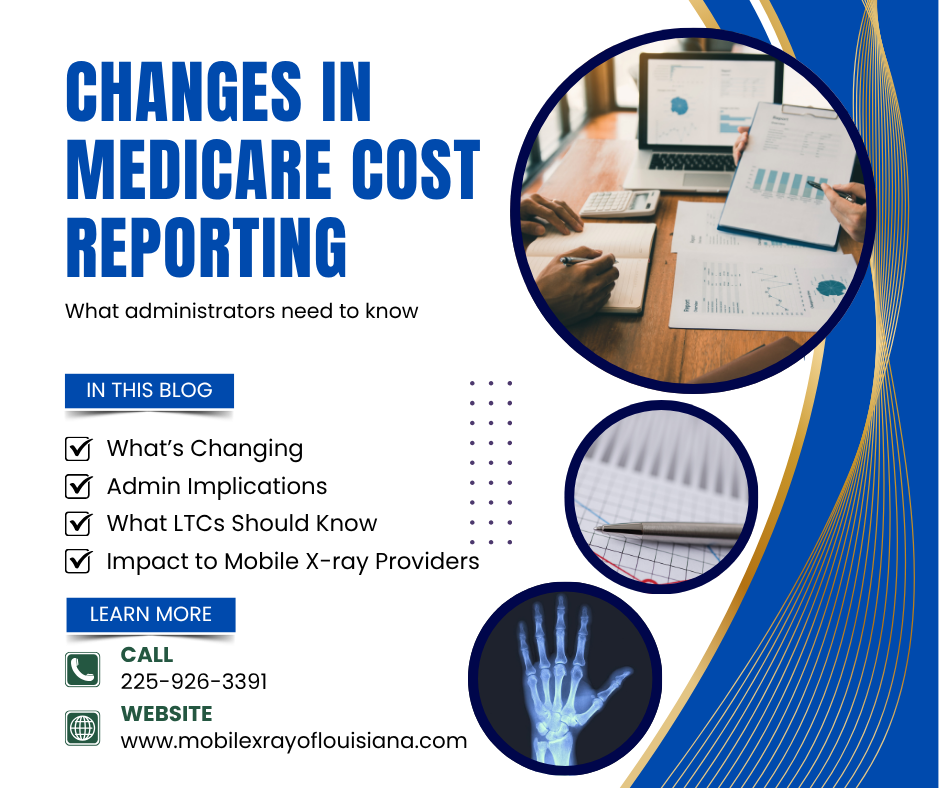Exploring the Advantages of Mobile Imaging Technologies: X-ray, Ultrasound, and ECHO
- Michelle Shank

- Aug 5
- 4 min read

In today’s fast-paced healthcare landscape, mobile imaging technologies such as mobile X-ray, mobile ultrasound, and mobile ECHO are transforming the way medical professionals diagnose and treat patients. This shift towards portable diagnostic tools is revolutionizing patient care, especially in emergency settings, home healthcare, and rural areas where access to traditional imaging facilities may be limited. This blog post delves into the many benefits of these innovative mobile imaging technologies.
Accessibility and Convenience
Mobile imaging technologies offer unprecedented accessibility and convenience for both patients and healthcare providers.
Mobile X-ray technicians can bring the diagnostic equipment directly to the patient, eliminating the need for transport, which can be particularly challenging for those with mobility issues.
Furthermore, mobile imaging units can be deployed in various locations, including assisted living, nursing homes, remote clinics, and even patients' homes. This flexibility reduces waiting times for patients and facilitates timely diagnosis and treatment.
With the speed and convenience that mobile imaging offers, healthcare professionals can make faster decisions, ultimately improving patient outcomes.
Patient Comfort and Experience
One of the most significant advantages of mobile imaging technologies is the enhanced comfort they provide to patients.
Traditional imaging requires patients to travel to different facilities, which can be stressful and uncomfortable, especially for those with chronic illnesses or those recovering from surgery.
Mobile imaging allows patients to remain in familiar surroundings, which can significantly reduce anxiety and enhance their overall experience.
Cost-Effectiveness
Mobile imaging options are often more cost-effective than their stationary counterparts.
By bringing imaging services directly to the patient, healthcare facilities can reduce overhead costs related to transport and operational expenses, translating to more affordable care for patients.
Moreover, mobile imaging reduces the need for unnecessary admissions or extended hospital stays, thereby optimizing resource usage and further lowering costs.
This cost-effectiveness is especially beneficial for underserved populations who might otherwise postpone necessary imaging due to financial constraints.
Quick Turnaround Times
In emergency situations, time is of the essence.
Mobile imaging technologies facilitate rapid diagnostic processes by allowing healthcare providers to perform necessary imaging directly at the patient's location.
This immediacy can be crucial for conditions such as trauma, cardiac events, and respiratory distress, where every minute counts.
Quick turnaround times not only enable faster diagnosis but also allow for rapid initiation of treatment plans, which can lead to better clinical outcomes for patients.
Integration with Telemedicine
The rise of telemedicine complements mobile imaging technologies perfectly.
By integrating mobile imaging with telehealth services, healthcare providers can remotely review images, consult with specialists, and develop treatment plans without requiring the patient to make another trip to a clinic or hospital.
This seamless integration ensures that patients receive comprehensive care while also minimizing potential delays in diagnosis and treatment.
Telemedicine can enhance the utility of mobile imaging by extending the reach of skilled specialists to patients in remote areas, ensuring that top-quality care is accessible regardless of location.
Versatility Across Medical Fields
Mobile imaging technologies are versatile and can be utilized across various medical fields, from cardiology to obstetrics.
Mobile X-rays are widely used in emergency medicine, allowing for immediate imaging in trauma cases.
Mobile ultrasounds are essential in obstetrics for monitoring pregnancies and diagnosing potential complications.
Mobile ECHO procedures enable echocardiographic evaluations right at the bedside, critical for acute cardiology cases.
This versatility ensures that a wide range of patients benefit from these technologies, enhancing the overall quality of care available.
Enhanced Safety Protocols
Safety is a paramount concern in medical imaging, and mobile technologies help mitigate several risks associated with traditional imaging methods.
By enabling bedside imaging, healthcare providers can reduce patient movement, thus minimizing the risk of falls and injuries.
Additionally, mobile imaging can be equipped with the latest safety features and protocols to reduce radiation exposure, ensuring the health and safety of both patients and healthcare staff.
Infection control measures are also easier to implement with mobile units, as they can be thoroughly sanitized and maintained without the high foot traffic found in traditional imaging departments.
Improved Workflow for Healthcare Providers
The introduction of mobile imaging technologies can streamline workflow within healthcare environments.
By reducing the need for patients to navigate through multiple locations, healthcare staff can better allocate their time and resources.
Healthcare providers can manage their schedules more efficiently, leading to increased productivity and improved service delivery.
Mobile imaging technologies help create a smoother patient flow, allowing for more patients to receive care in a shorter amount of time.
Conclusion
Mobile imaging technologies are paving the way for a new era in healthcare.
With their ability to provide quick, accessible, and comfortable imaging solutions, mobile X-ray, ultrasound, and ECHO not only enhance patient care but also improve operational efficiencies within healthcare practices.
As technology continues to advance, the integration of mobile imaging into everyday medical practice stands to revolutionize how healthcare is delivered, ensuring that quality care is accessible to patients regardless of their circumstances.
The benefits of these mobile solutions are extensive, making them an essential component of modern healthcare strategies aimed at improving patient outcomes and experiences.
As we move forward, continued investment in mobile imaging technologies will undoubtedly play a key role in shaping the future of healthcare delivery.
.png)



Comments